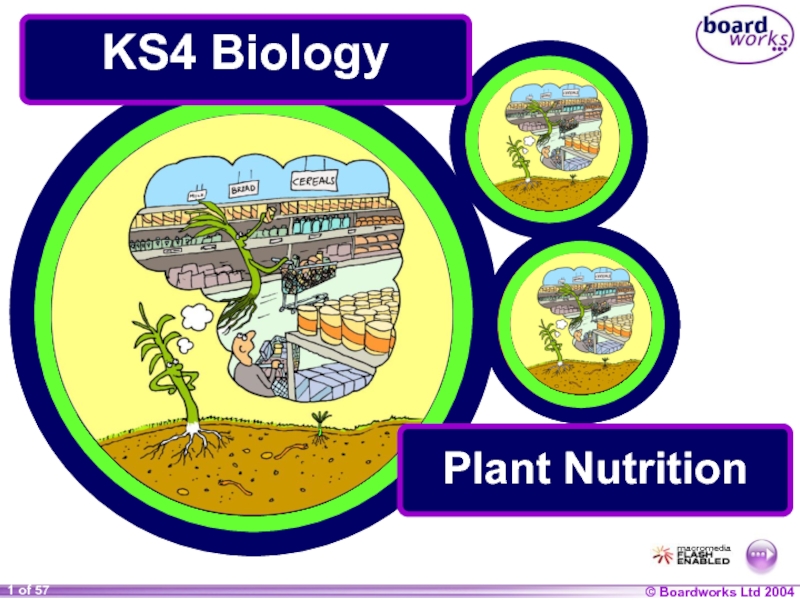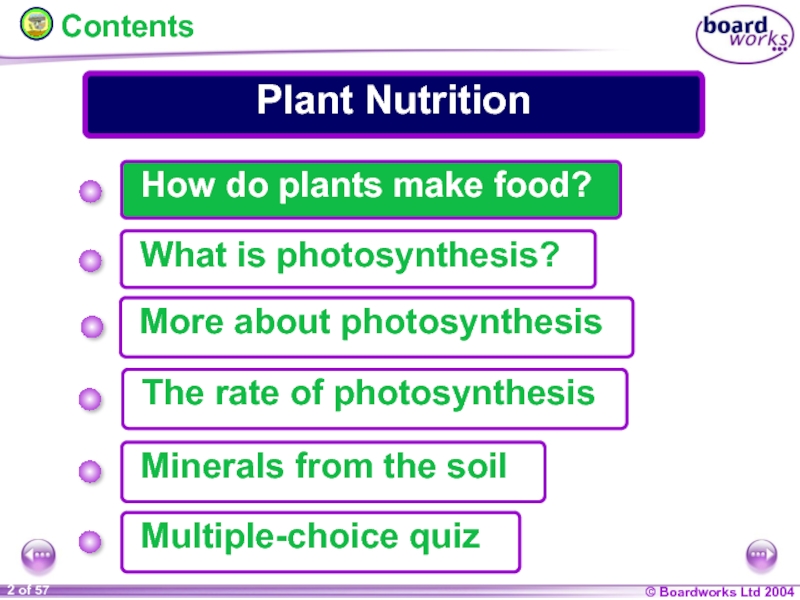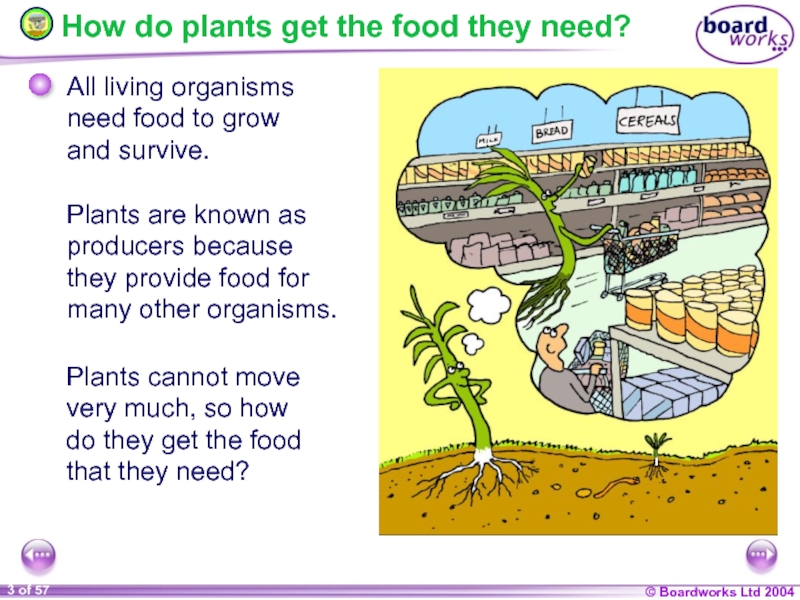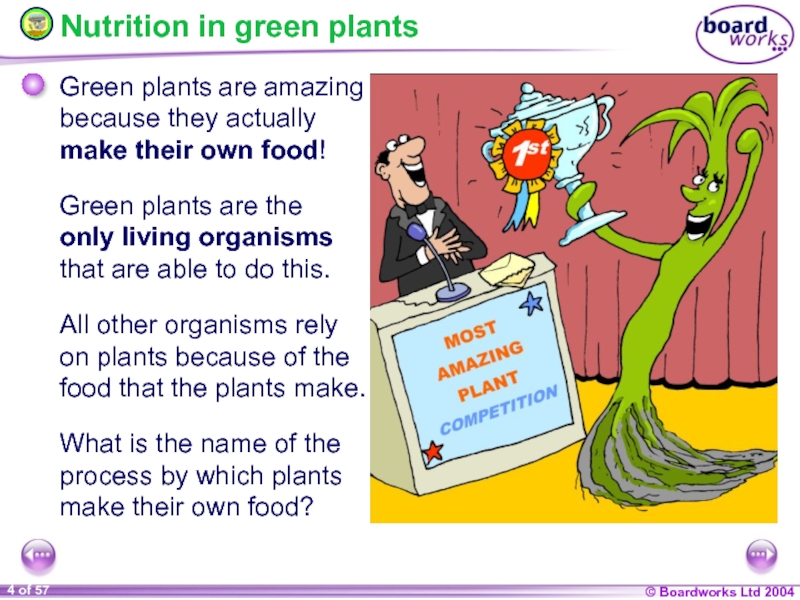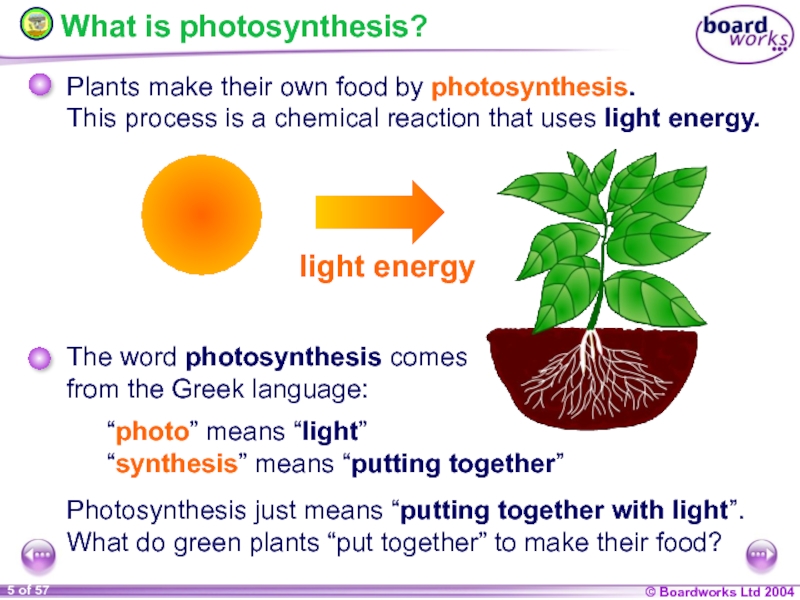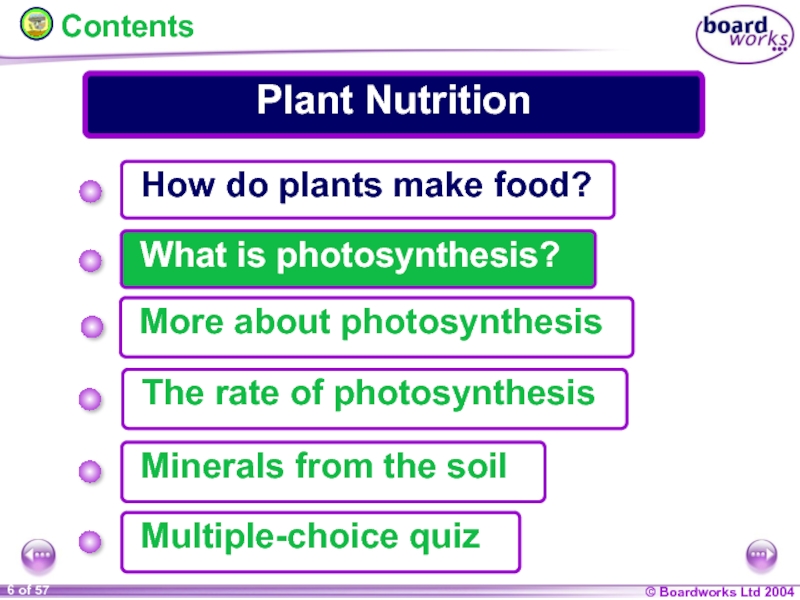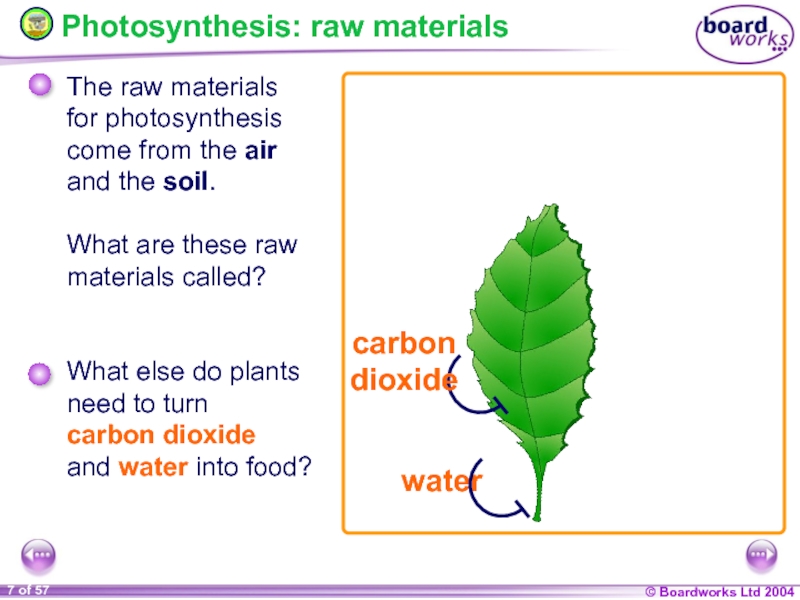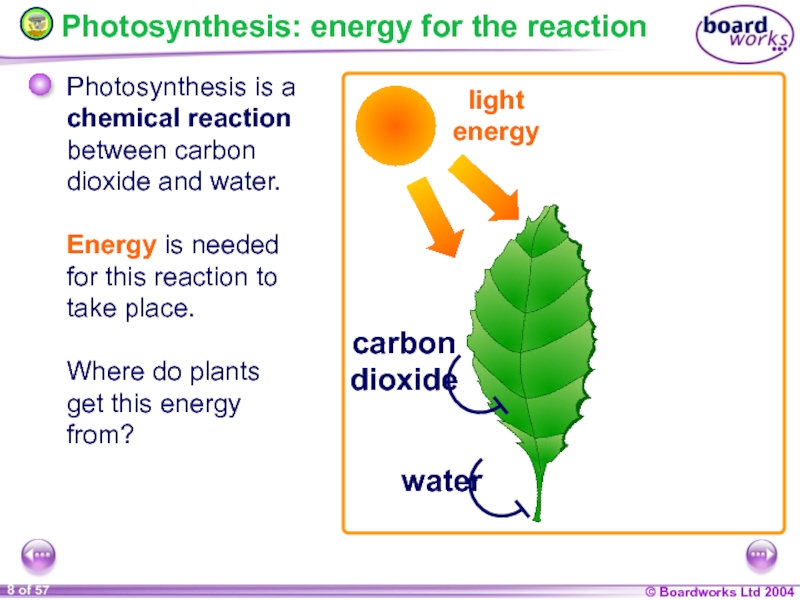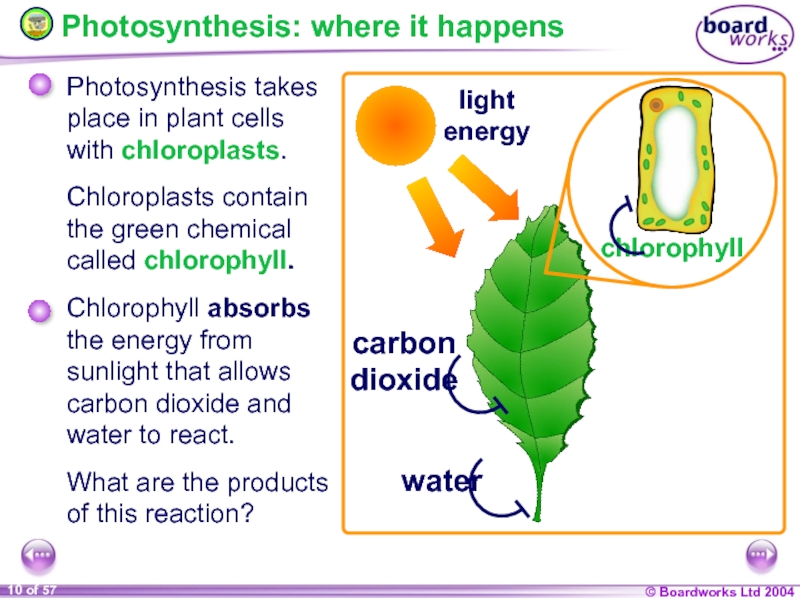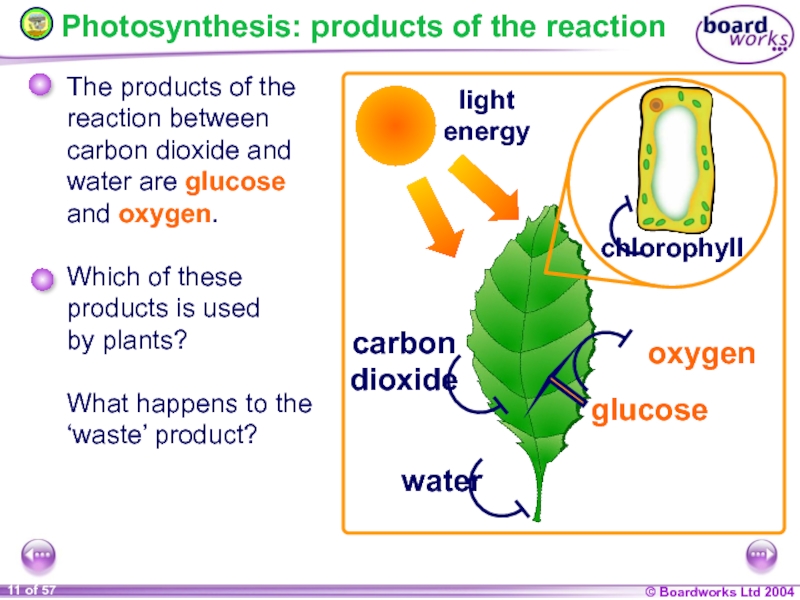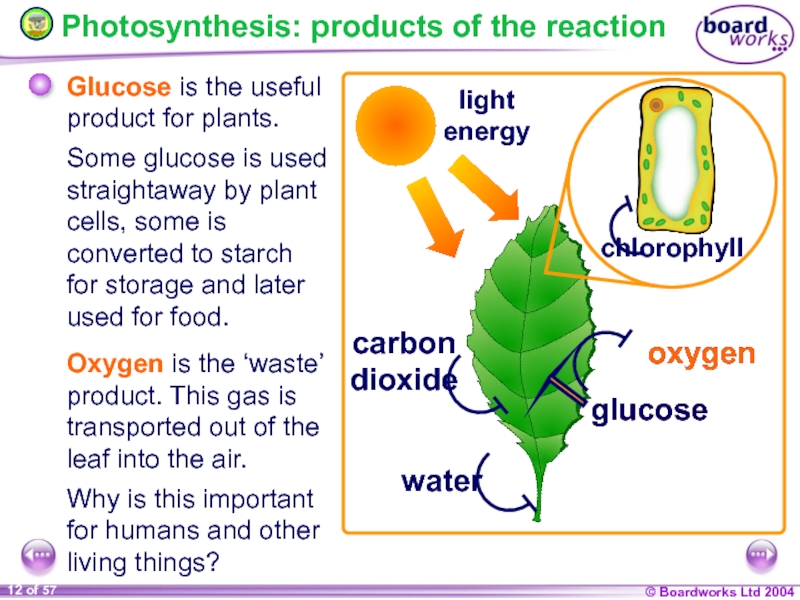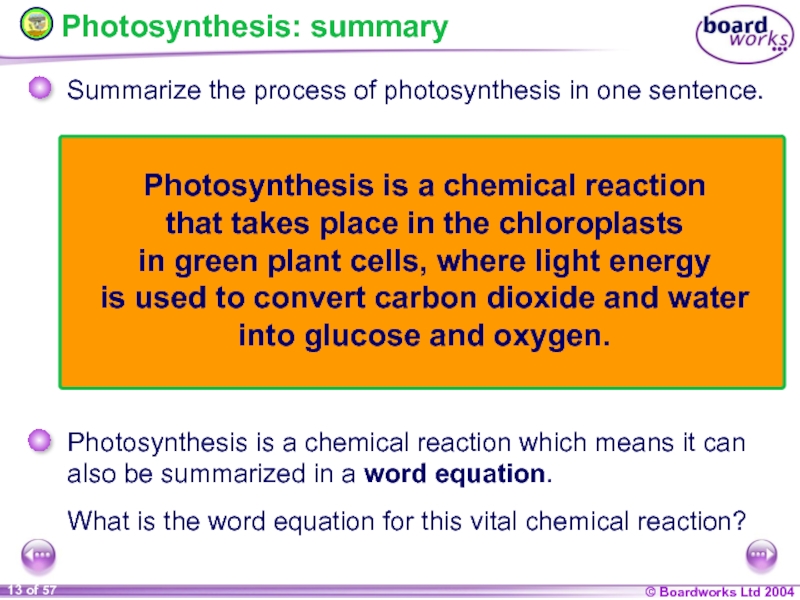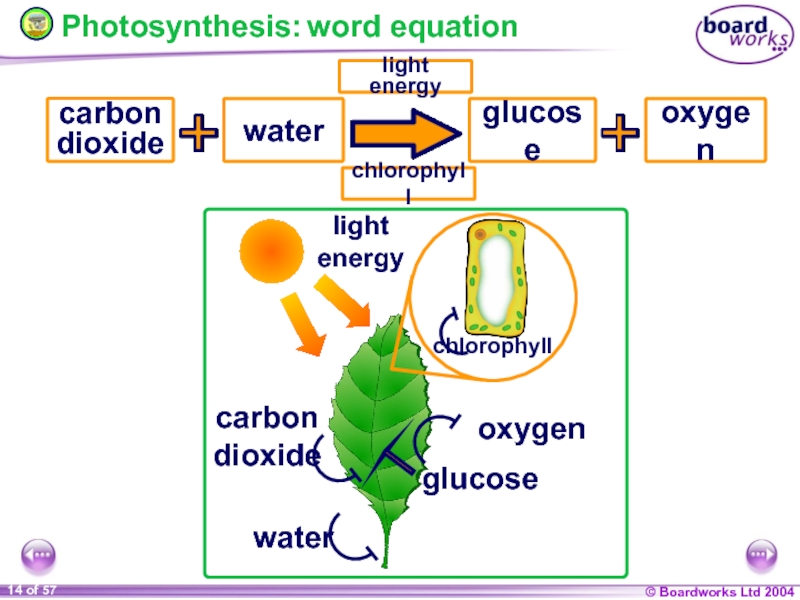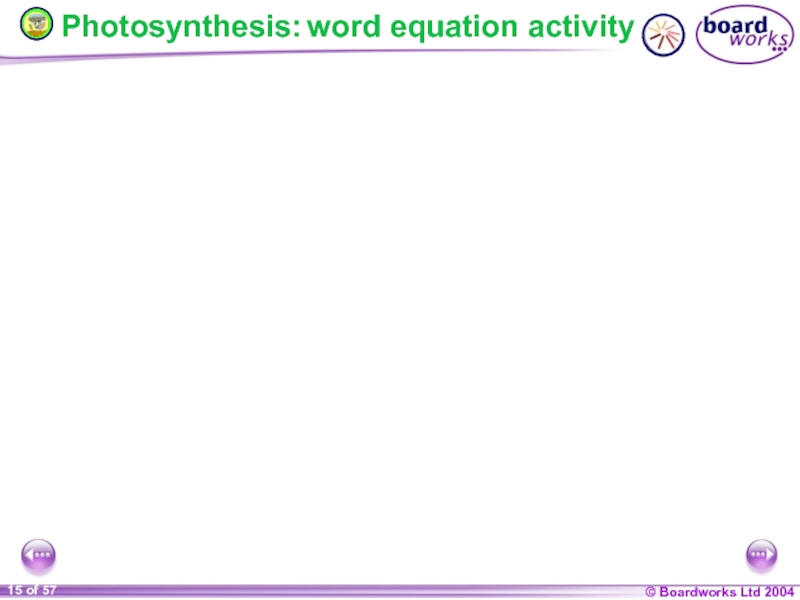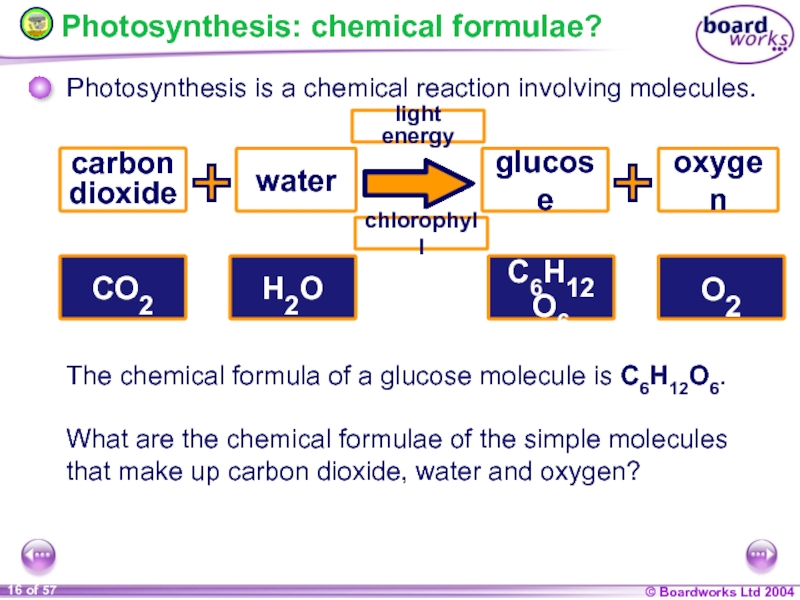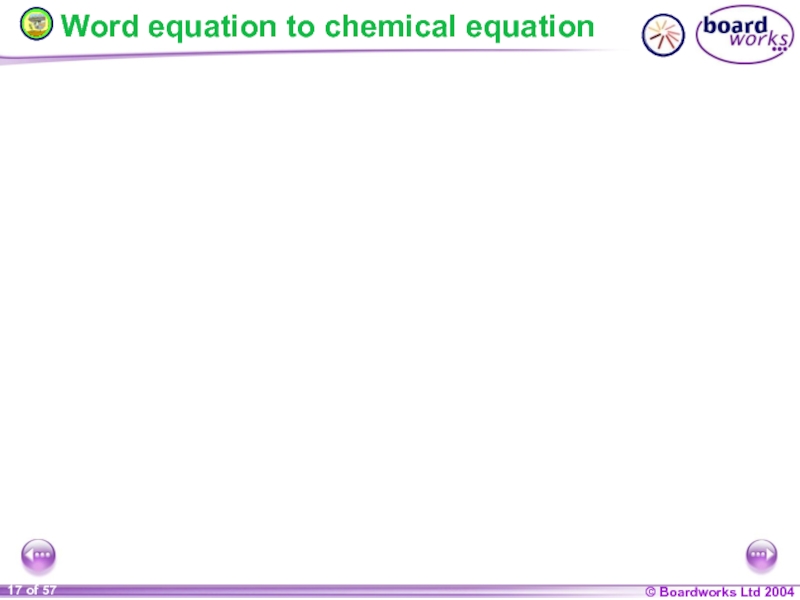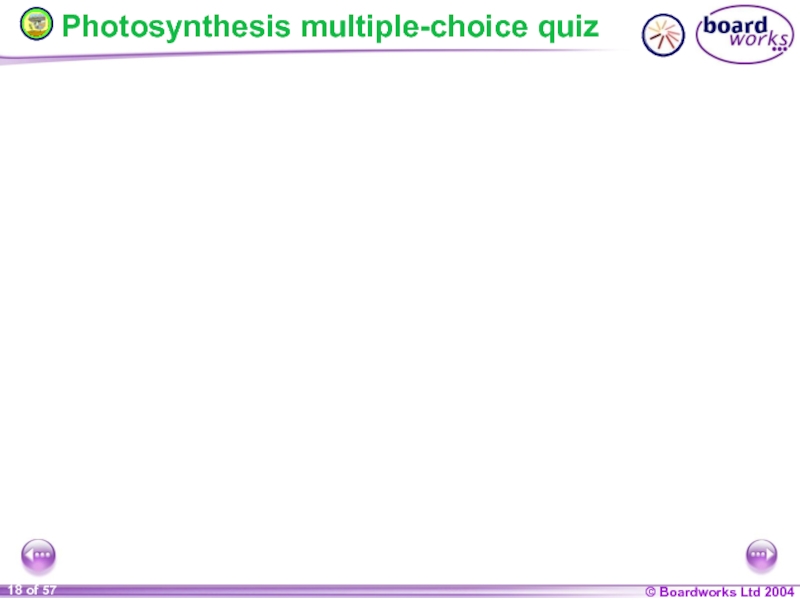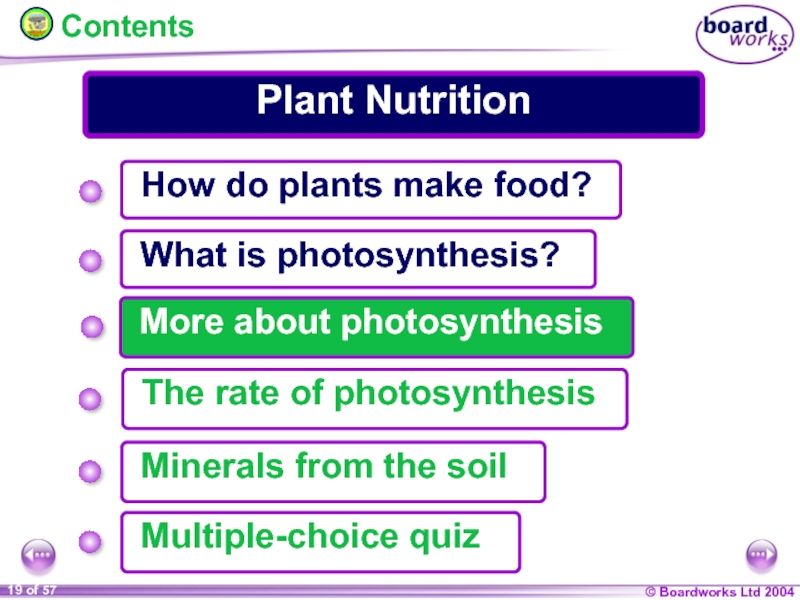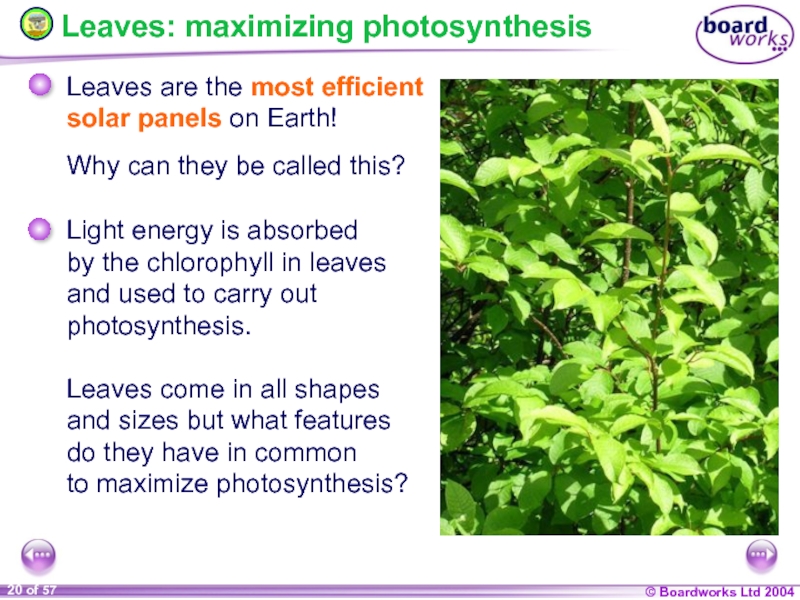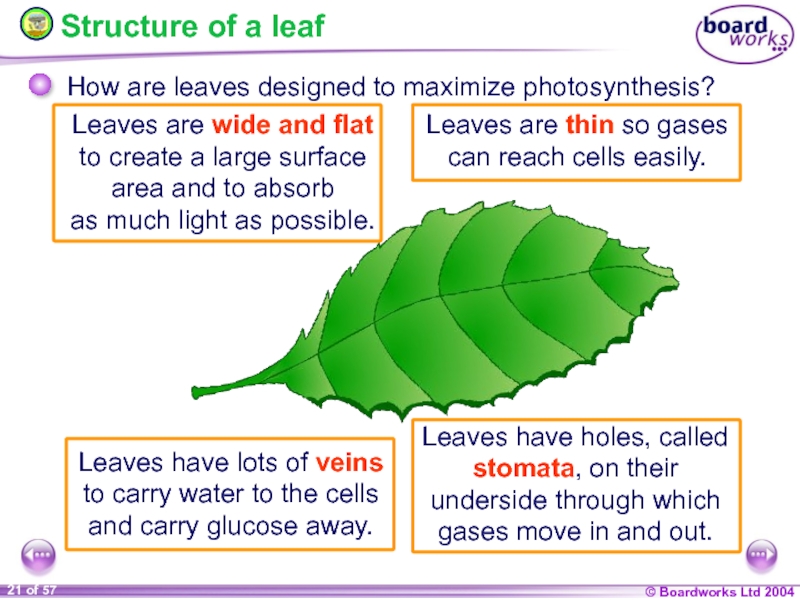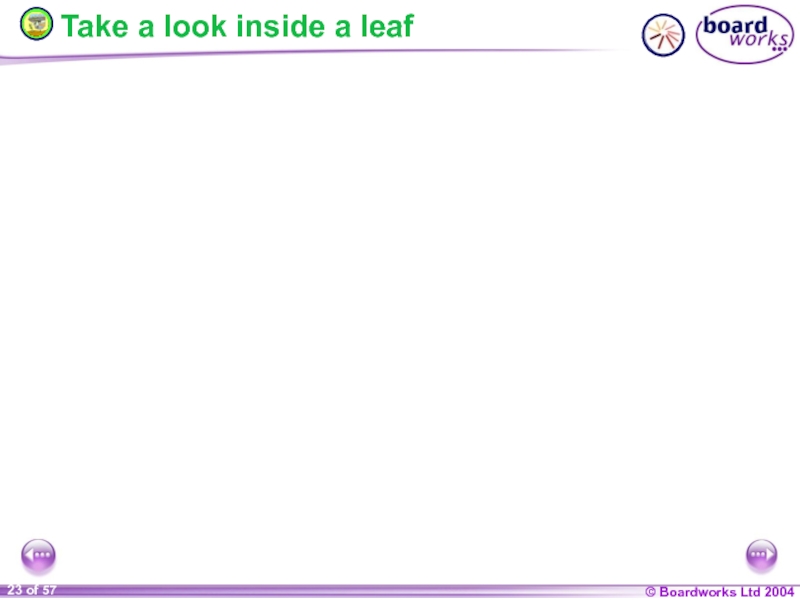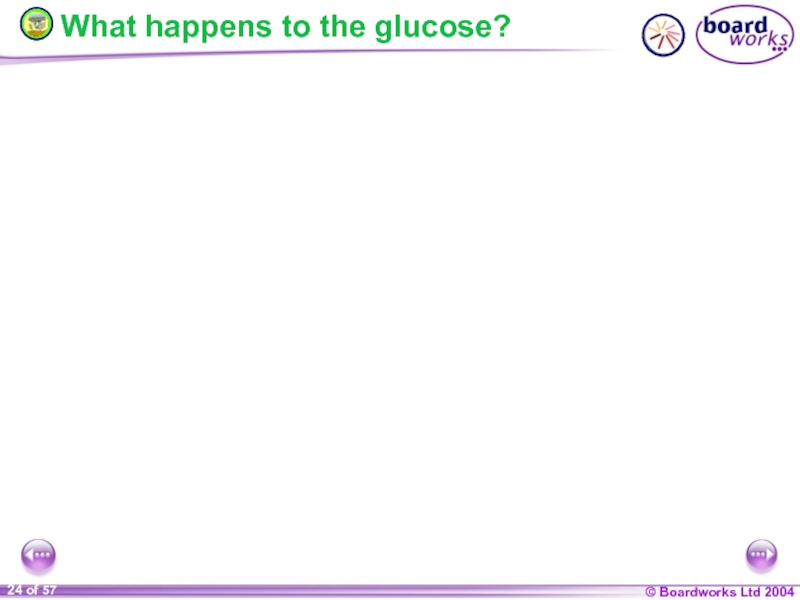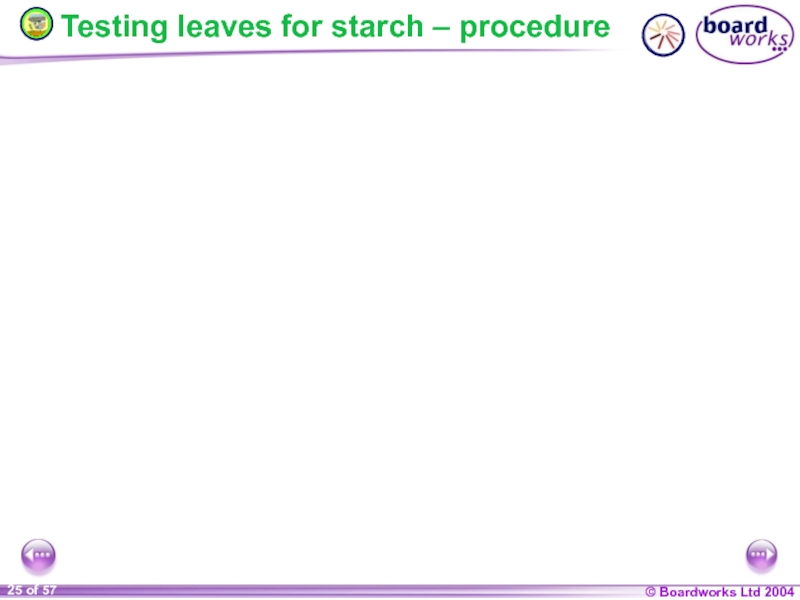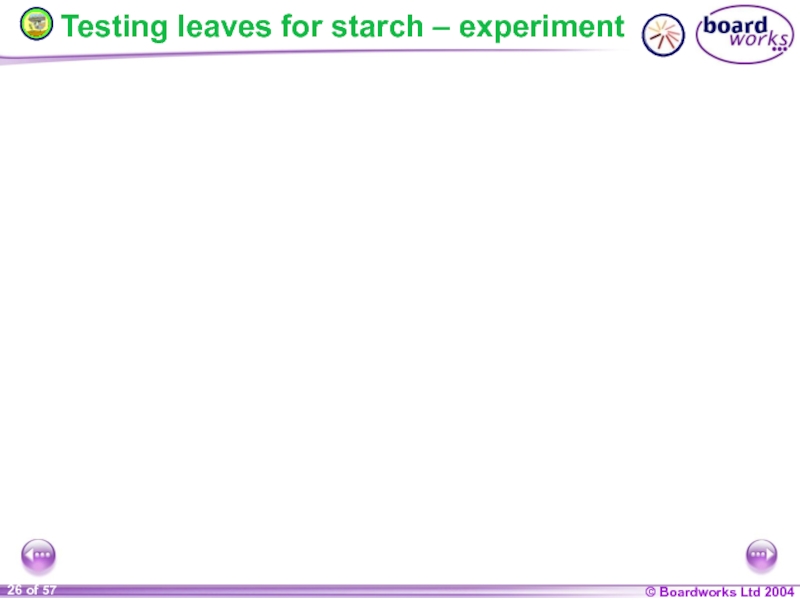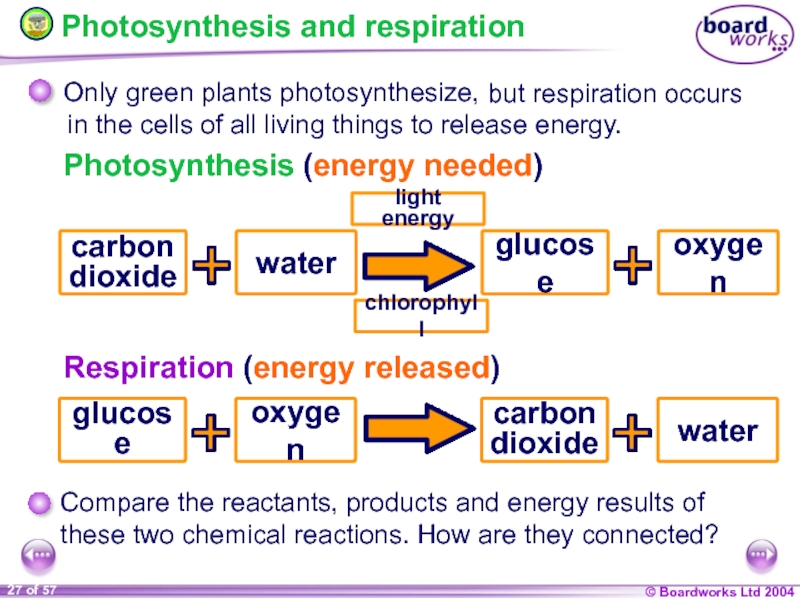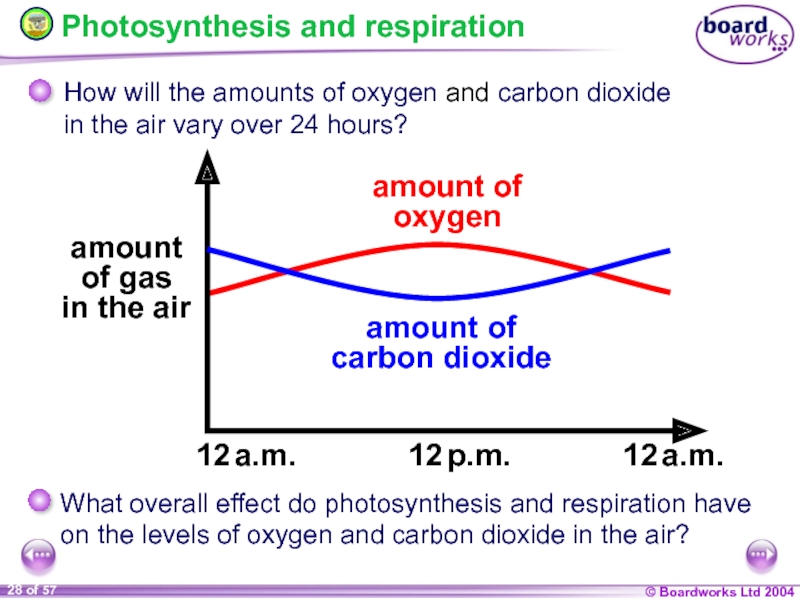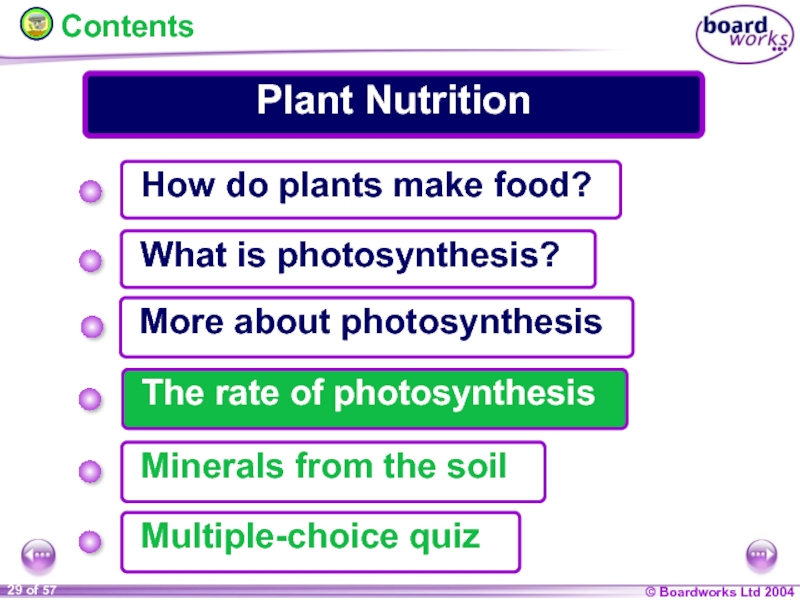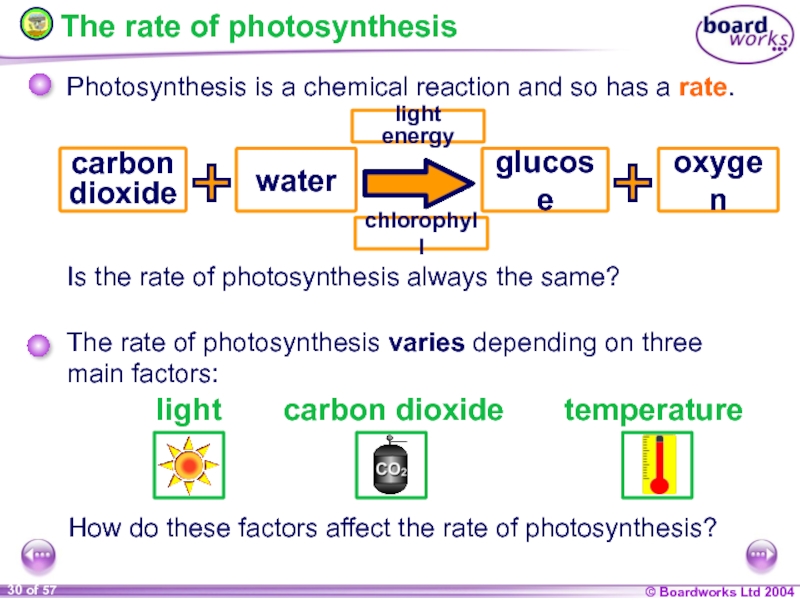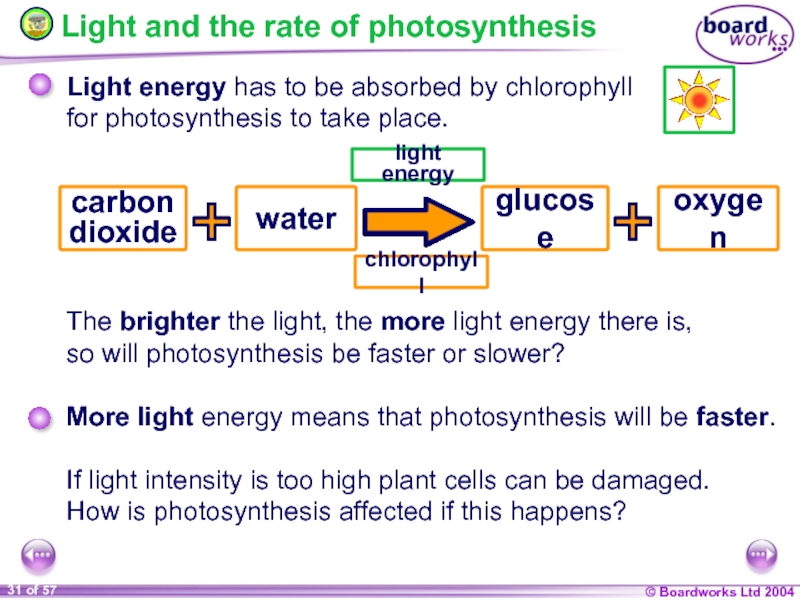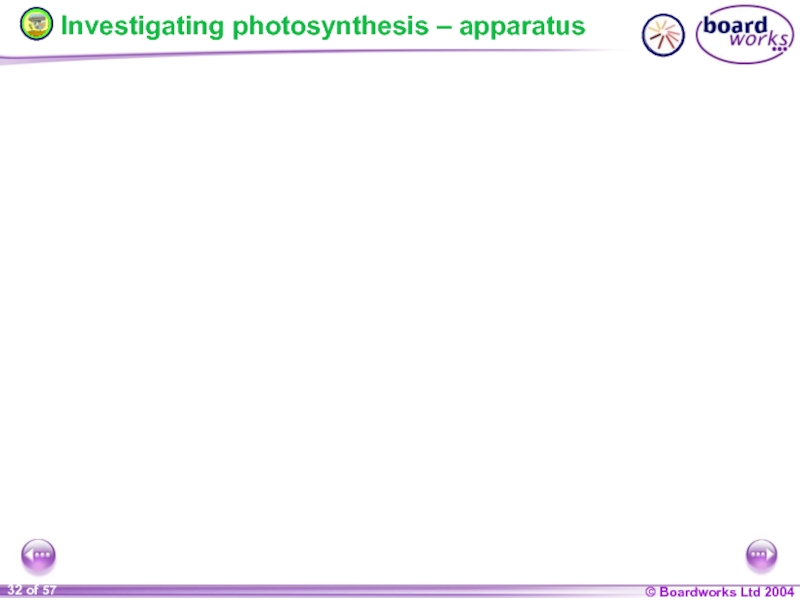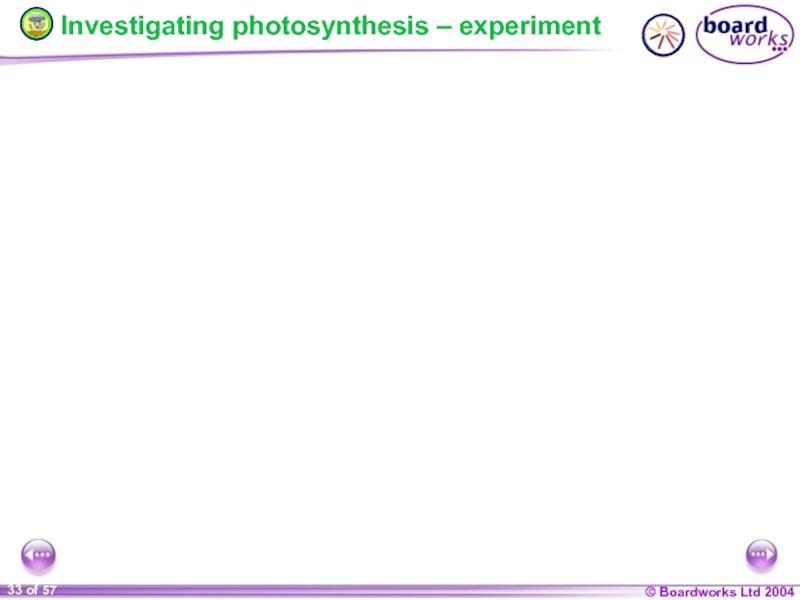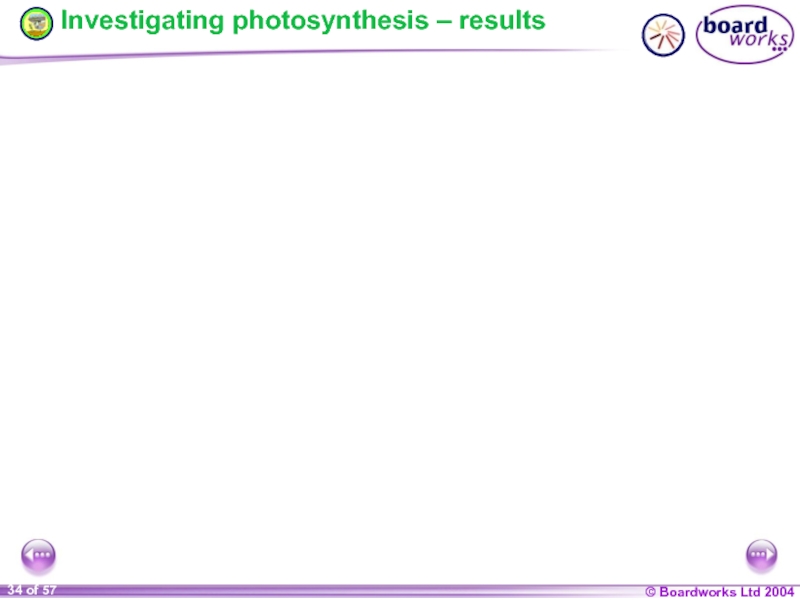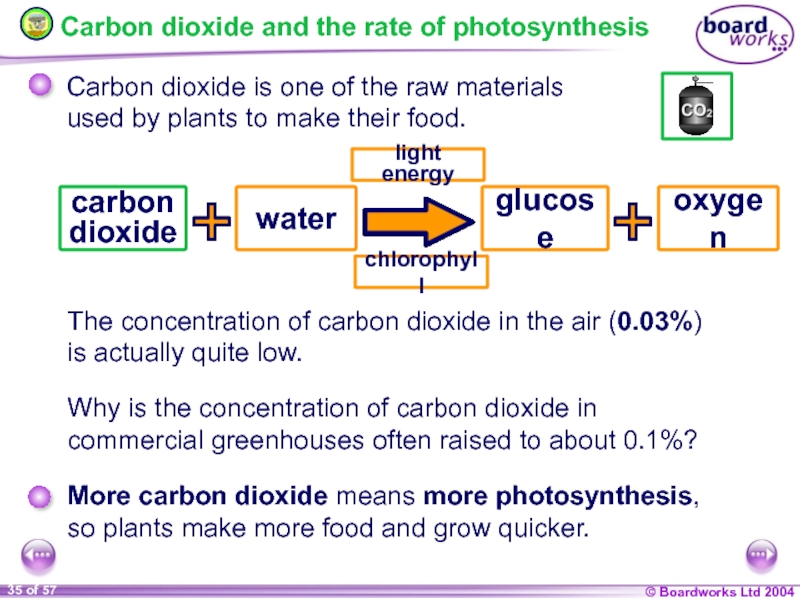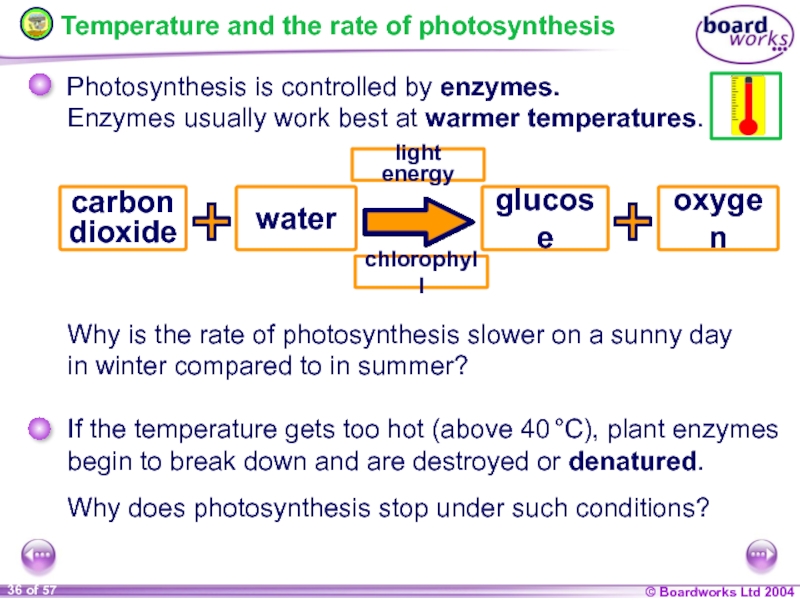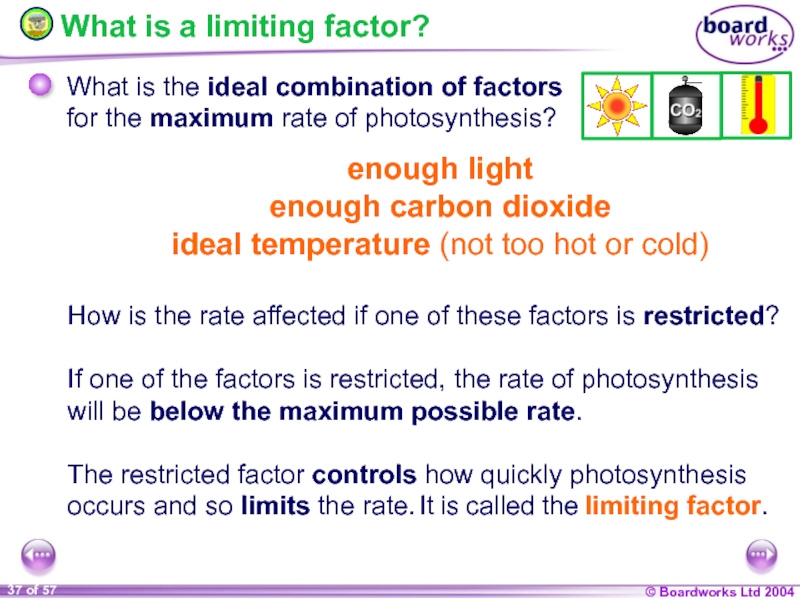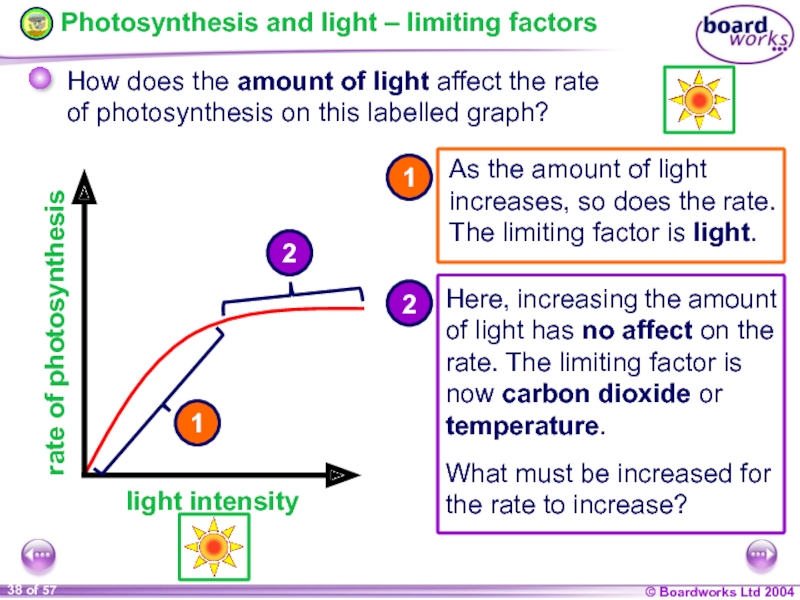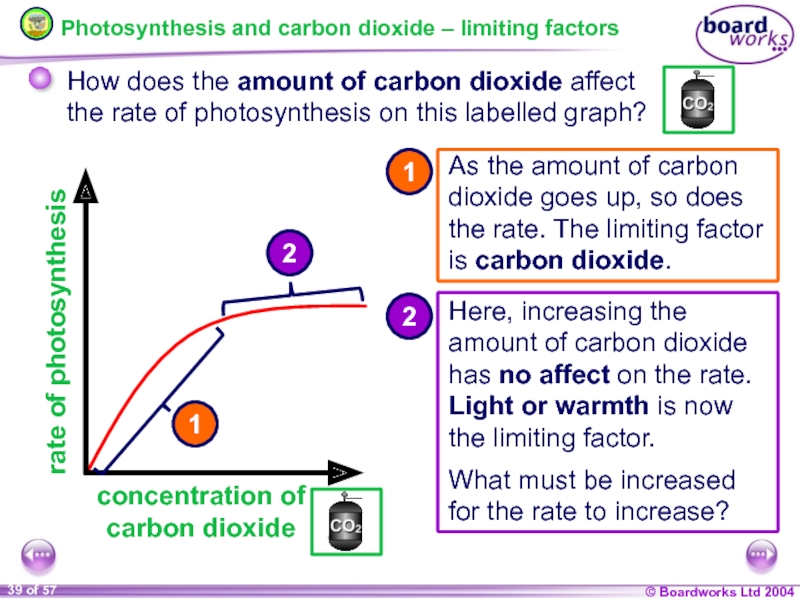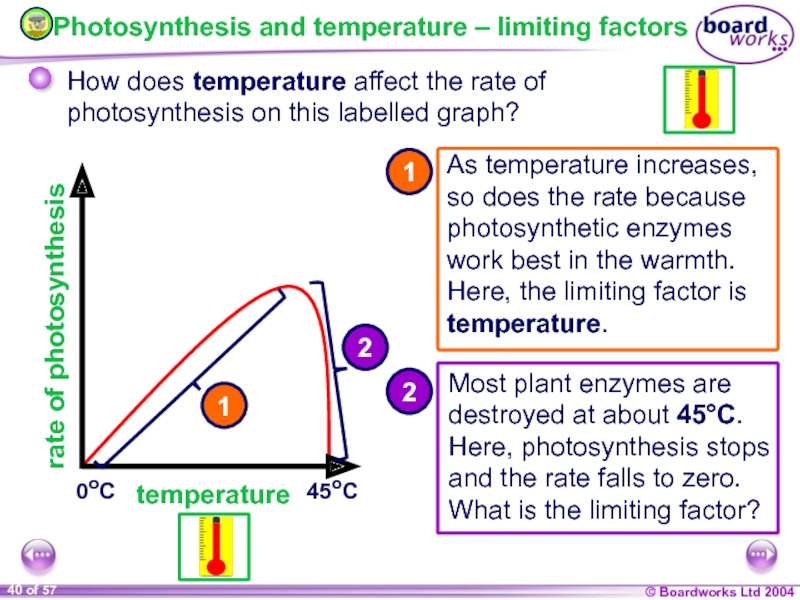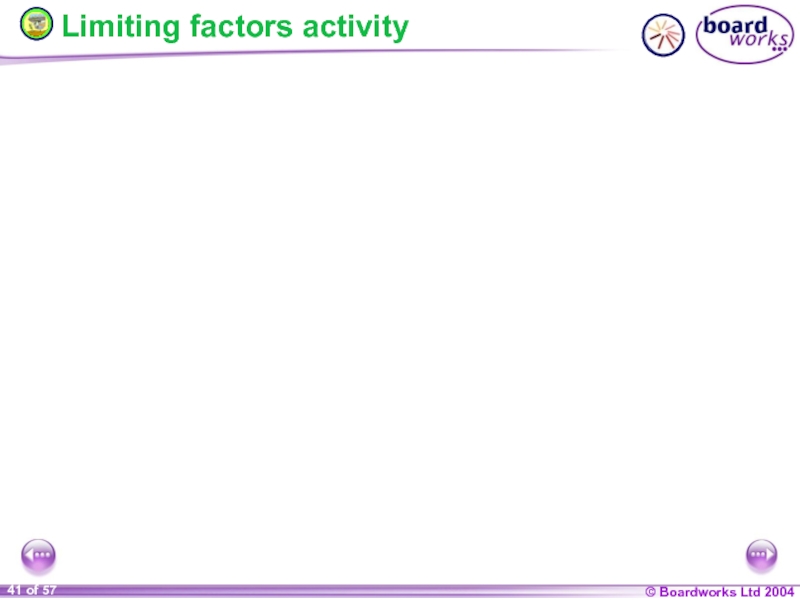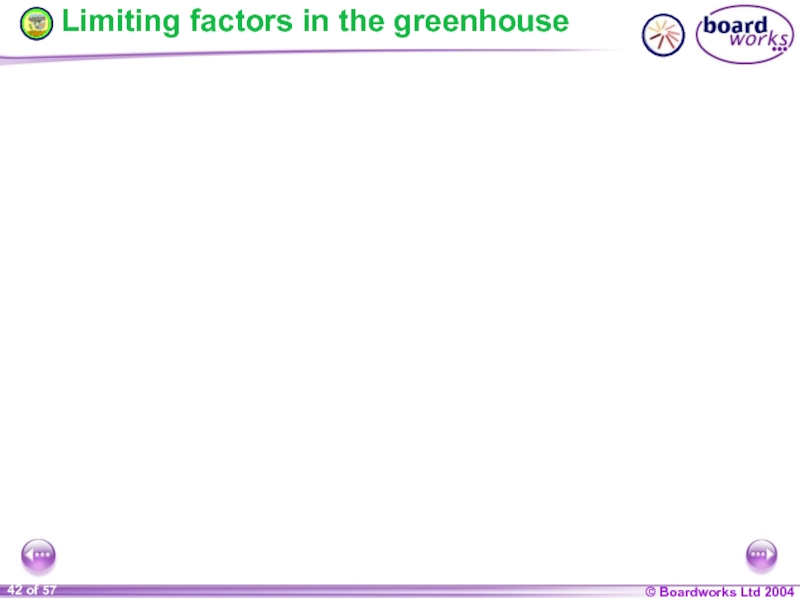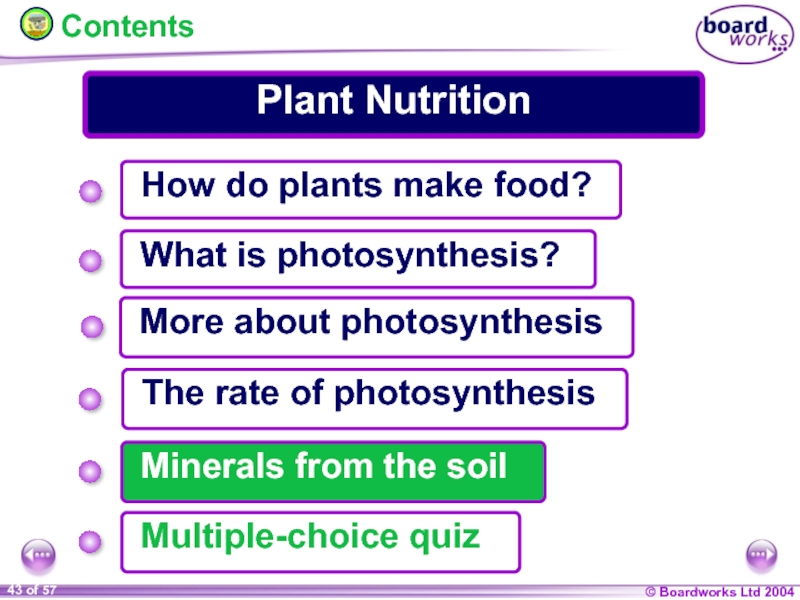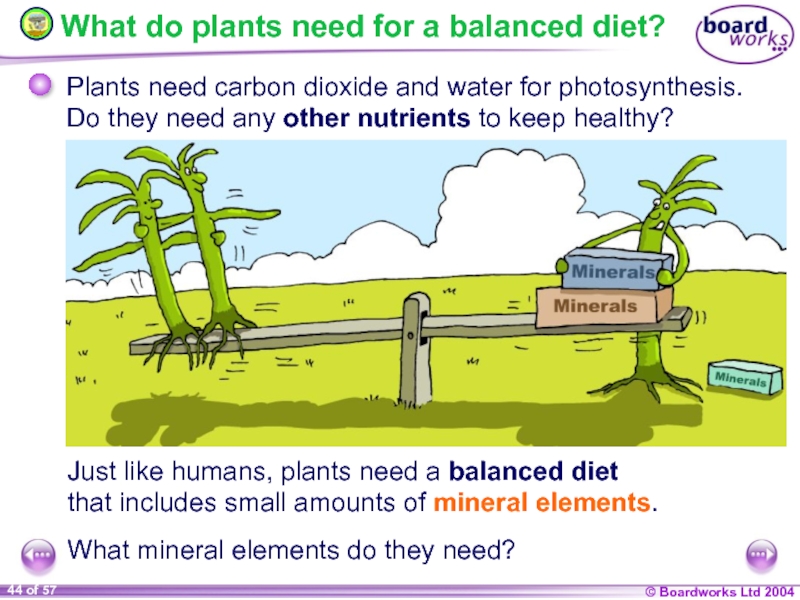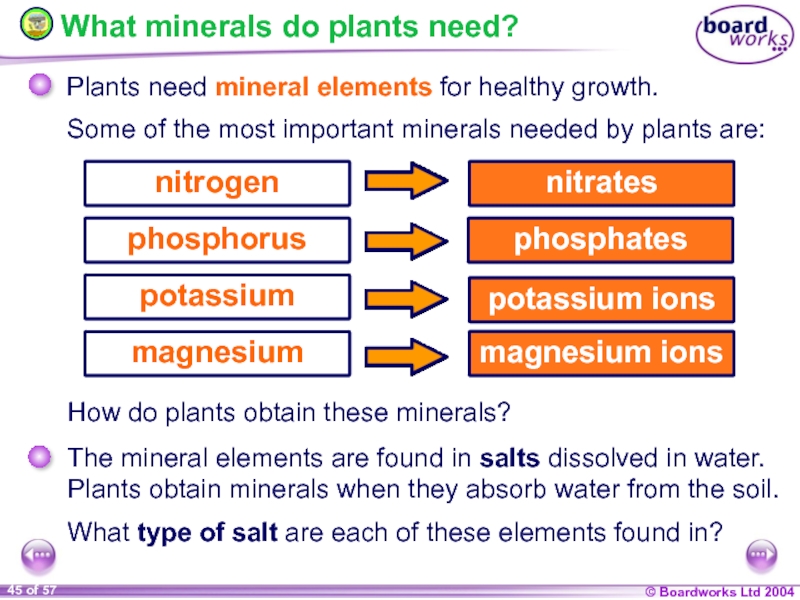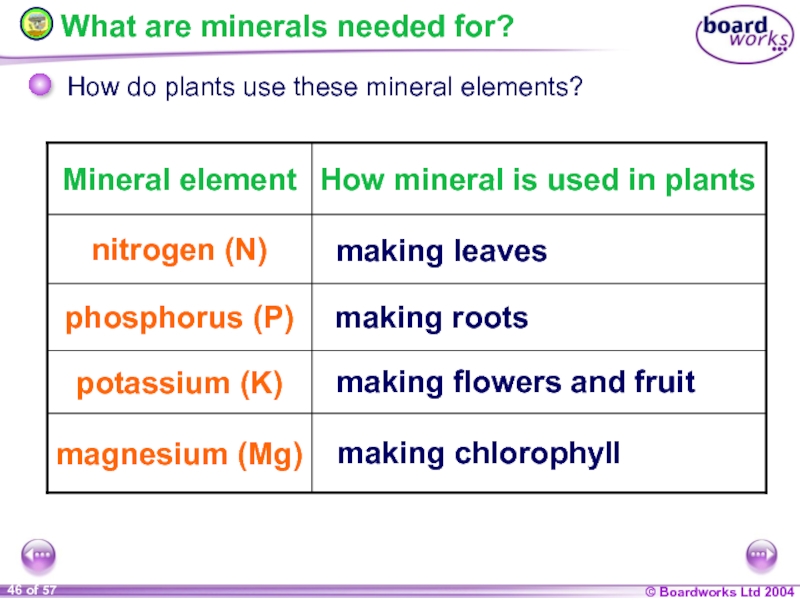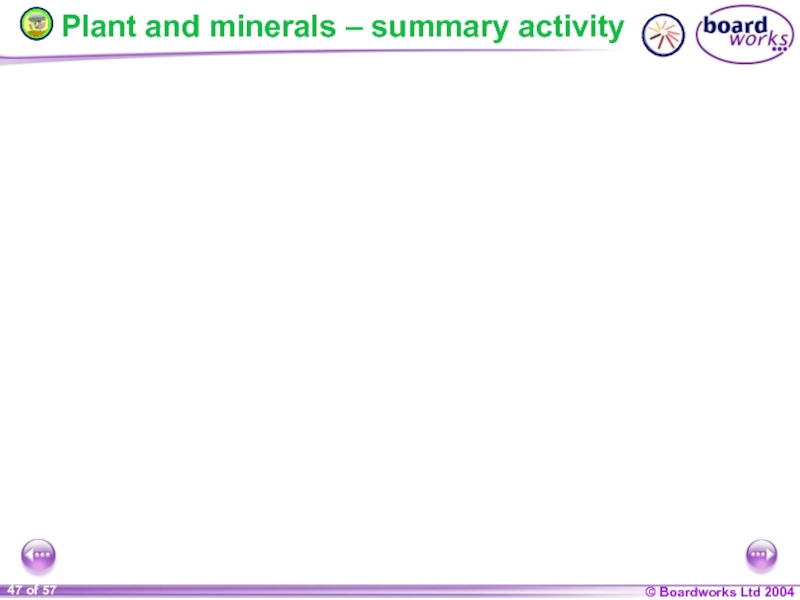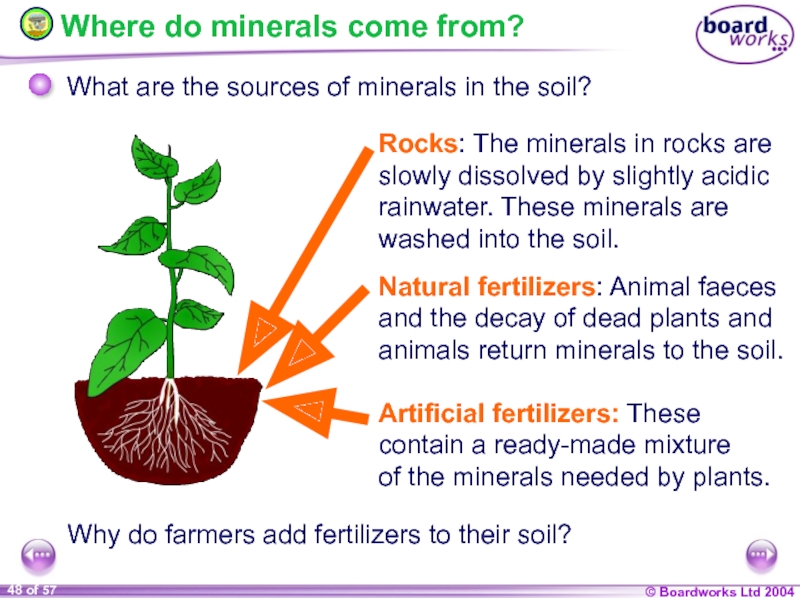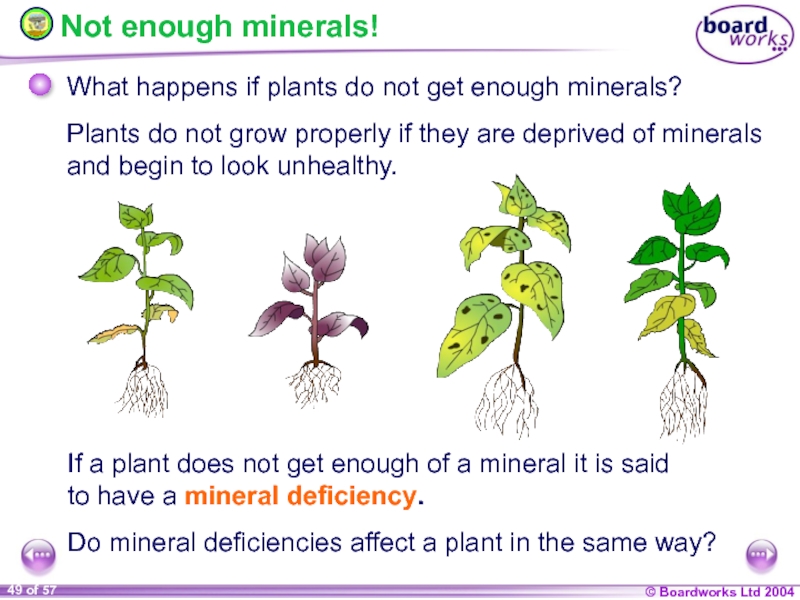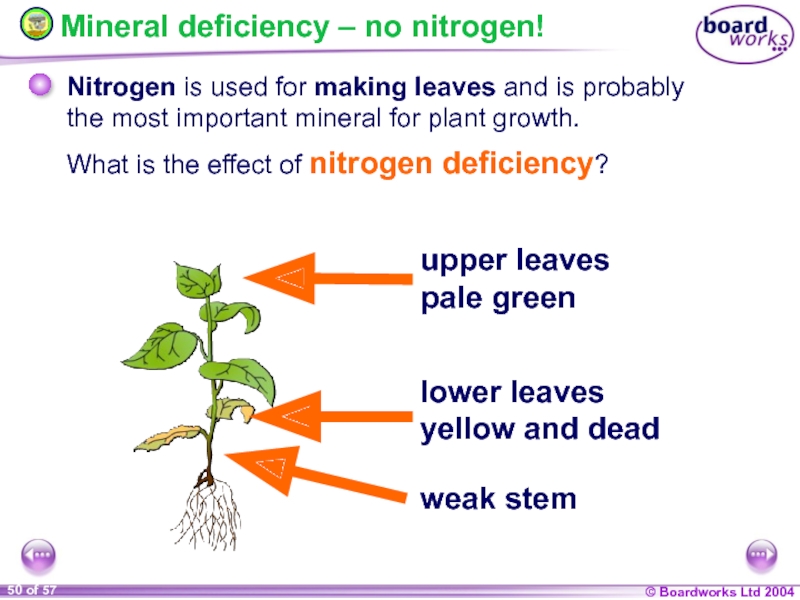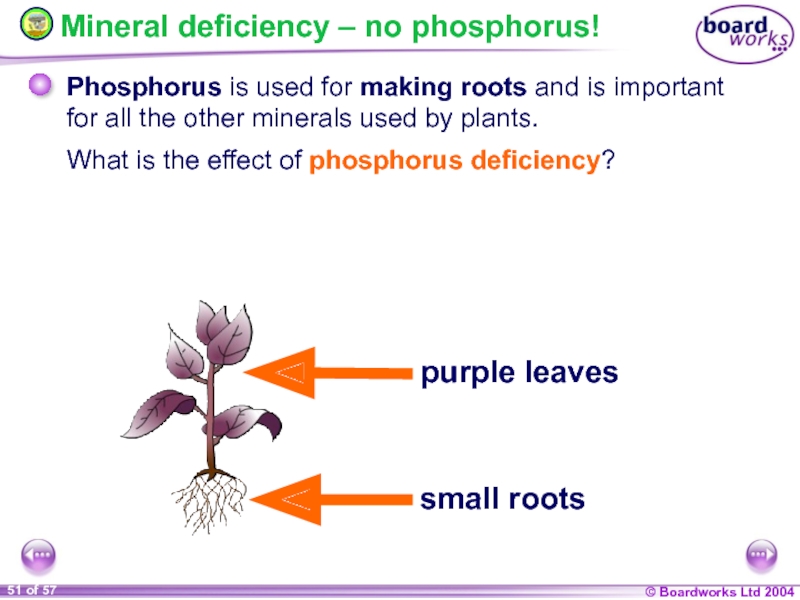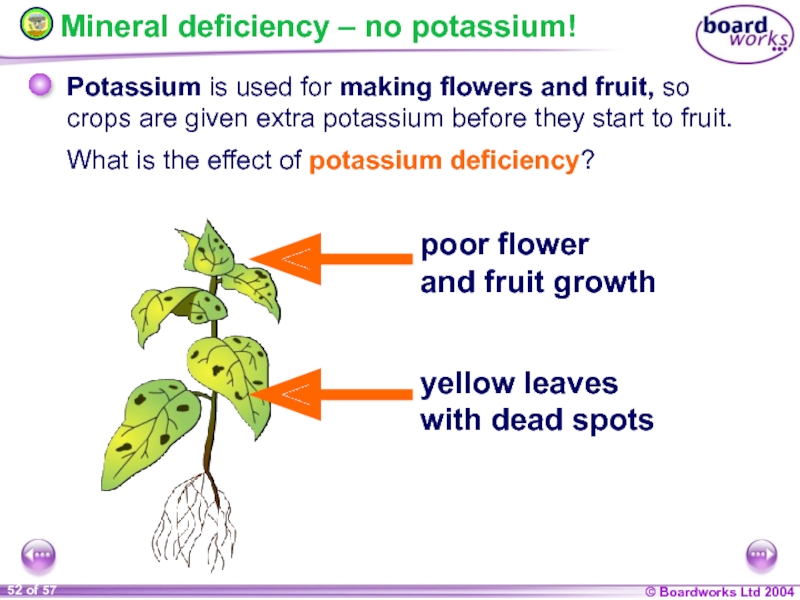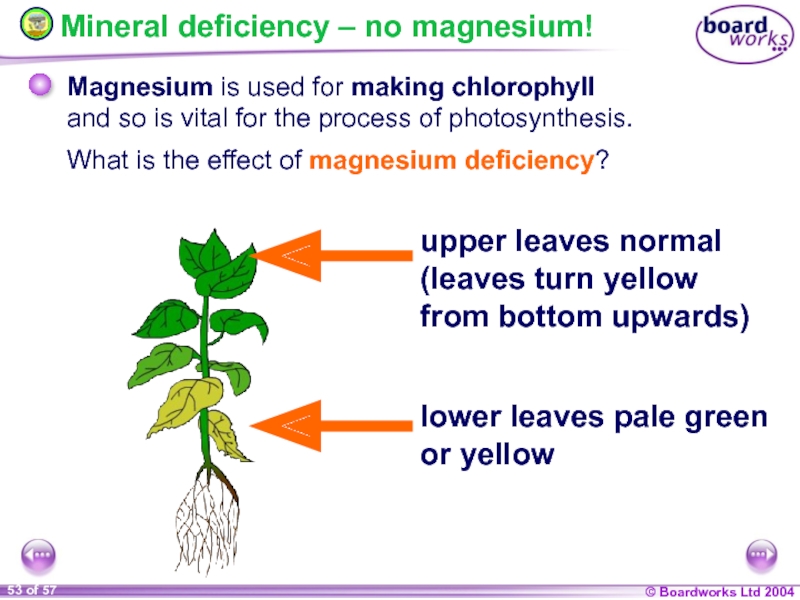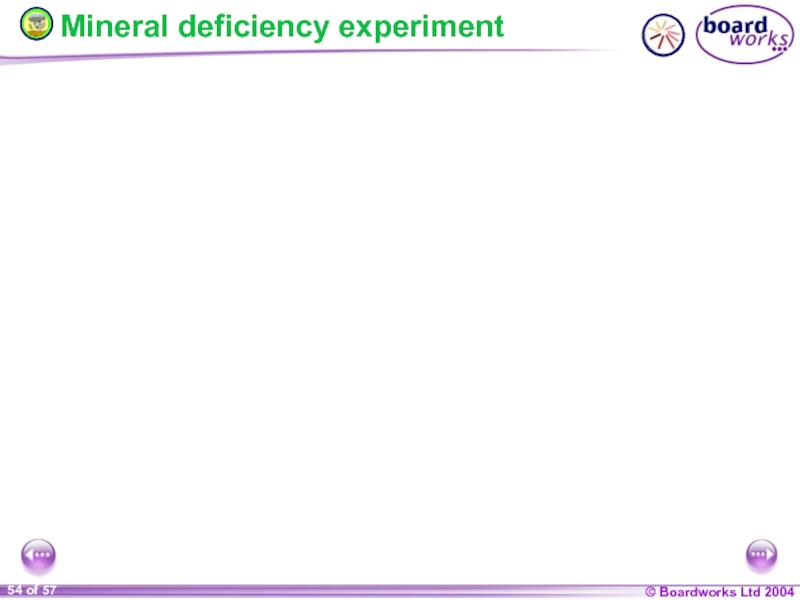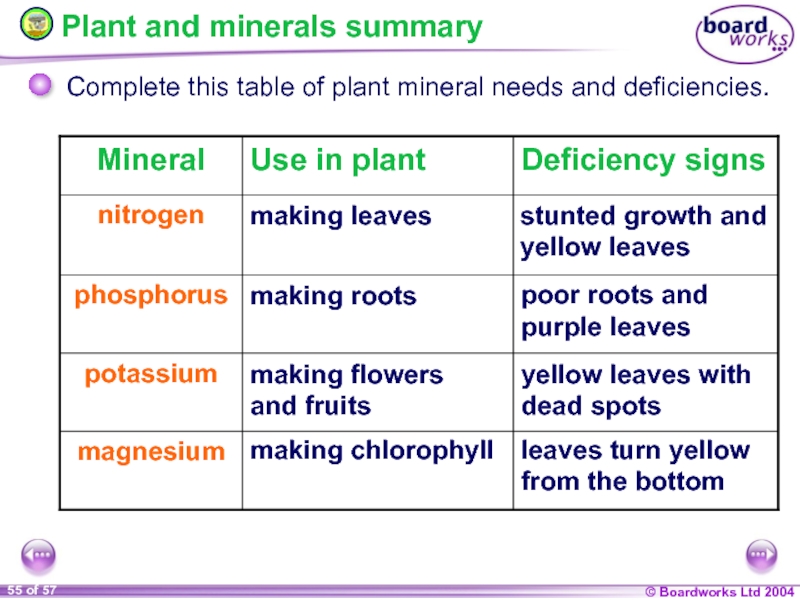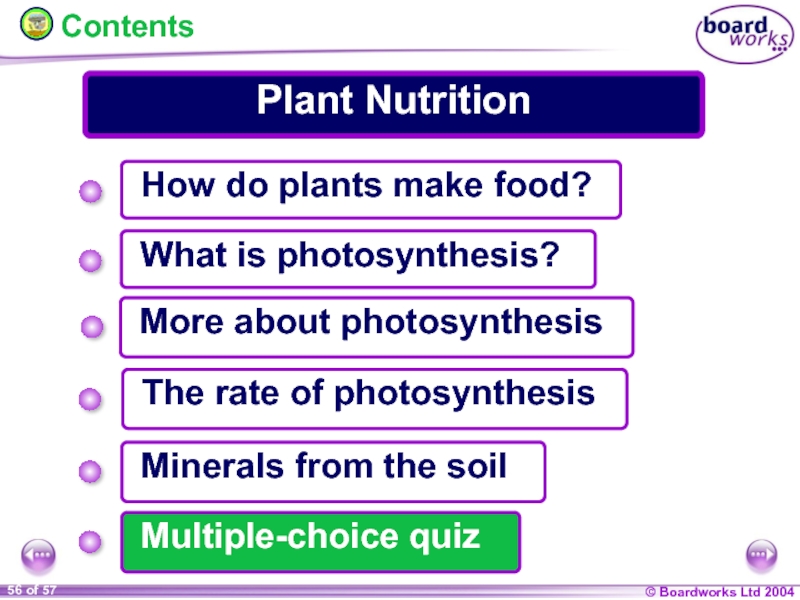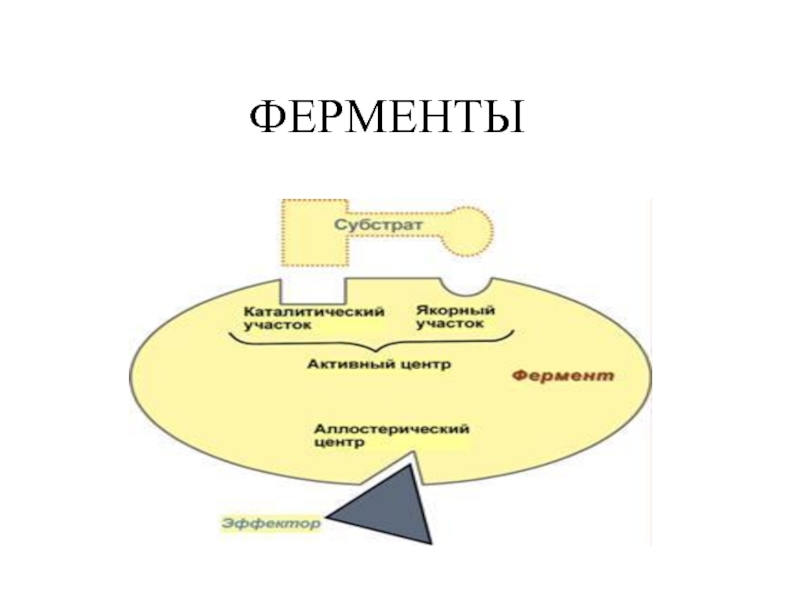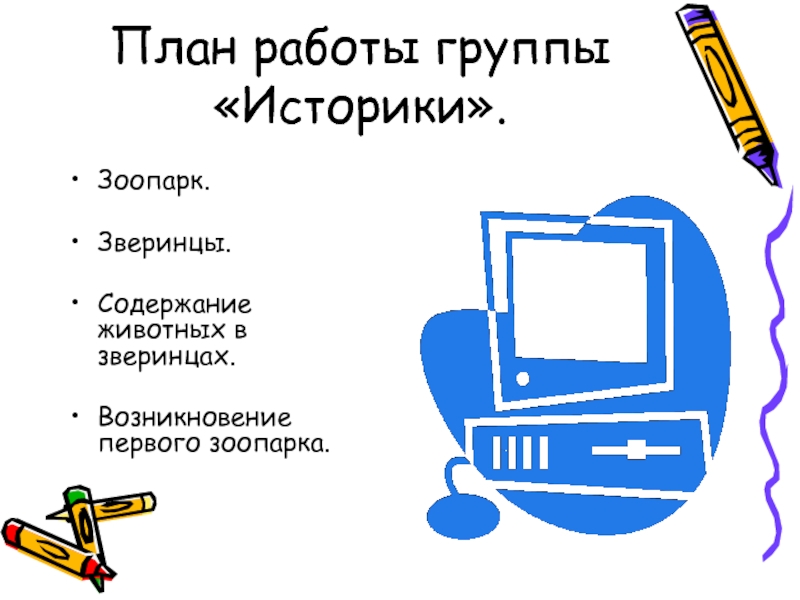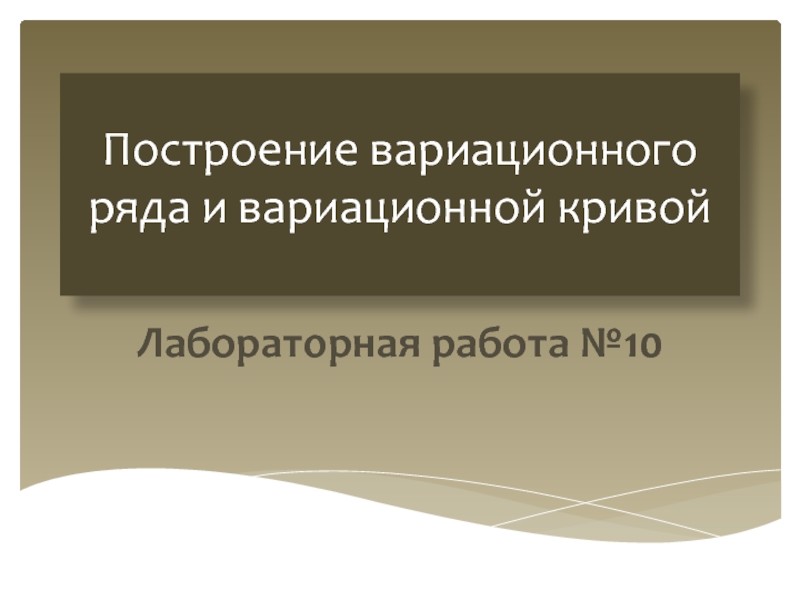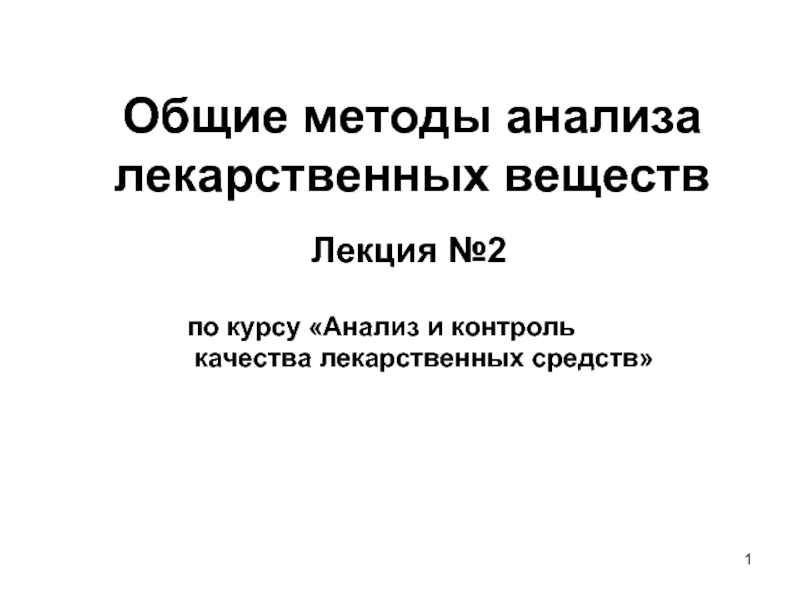- Главная
- Разное
- Дизайн
- Бизнес и предпринимательство
- Аналитика
- Образование
- Развлечения
- Красота и здоровье
- Финансы
- Государство
- Путешествия
- Спорт
- Недвижимость
- Армия
- Графика
- Культурология
- Еда и кулинария
- Лингвистика
- Английский язык
- Астрономия
- Алгебра
- Биология
- География
- Детские презентации
- Информатика
- История
- Литература
- Маркетинг
- Математика
- Медицина
- Менеджмент
- Музыка
- МХК
- Немецкий язык
- ОБЖ
- Обществознание
- Окружающий мир
- Педагогика
- Русский язык
- Технология
- Физика
- Философия
- Химия
- Шаблоны, картинки для презентаций
- Экология
- Экономика
- Юриспруденция
KS4 Plant Nutrition. Plant Nutrition презентация
Содержание
- 1. KS4 Plant Nutrition. Plant Nutrition
- 2. The rate of photosynthesis Minerals
- 3. All living organisms need food to grow
- 4. Green plants are amazing because they actually
- 5. Plants make their own food by photosynthesis.
- 6. The rate of photosynthesis Minerals
- 7. The raw materials for photosynthesis come from
- 8. Photosynthesis is a chemical reaction between carbon
- 9. Plants use light energy from the Sun
- 10. Photosynthesis takes place in plant cells
- 11. The products of the reaction between carbon
- 12. Glucose is the useful product for plants.
- 13. Photosynthesis: summary Summarize the
- 14. Photosynthesis: word equation
- 15. Photosynthesis: word equation activity
- 16. Photosynthesis: chemical formulae?
- 17. Word equation to chemical equation
- 18. Photosynthesis multiple-choice quiz
- 19. The rate of photosynthesis Minerals
- 20. Leaves: maximizing photosynthesis Leaves
- 21. Structure of a leaf
- 22. Structure of a leaf activity
- 23. Take a look inside a leaf
- 24. What happens to the glucose?
- 25. Testing leaves for starch – procedure
- 26. Testing leaves for starch – experiment
- 27. Photosynthesis and respiration Only
- 28. 12 a.m.
- 29. The rate of photosynthesis Minerals
- 30. Photosynthesis is a chemical reaction and so
- 31. Light and the rate
- 32. Investigating photosynthesis – apparatus
- 33. Investigating photosynthesis – experiment
- 34. Investigating photosynthesis – results
- 35. Carbon dioxide is one of the raw
- 36. Photosynthesis is controlled by enzymes. Enzymes usually
- 37. What is the ideal combination of factors
- 38. Photosynthesis and light
- 39. Photosynthesis and
- 40. Photosynthesis and temperature
- 41. Limiting factors activity
- 42. Limiting factors in the greenhouse
- 43. The rate of photosynthesis Minerals
- 44. What do plants need
- 45. What minerals do plants
- 46. What are minerals needed
- 47. Plant and minerals – summary activity
- 48. Where do minerals come
- 49. Not enough minerals! What
- 50. Mineral deficiency – no
- 51. Mineral deficiency – no
- 52. Mineral deficiency – no
- 53. Mineral deficiency – no
- 54. Mineral deficiency experiment
- 55. Plant and minerals summary
- 56. The rate of photosynthesis Minerals
- 57. Multiple-choice quiz
Слайд 2 The rate of photosynthesis
Minerals from the soil
Plant Nutrition
What
More about photosynthesis
Contents
How do plants make food?
Multiple-choice quiz
Слайд 3All living organisms need food to grow and survive.
Plants are known as producers because they provide food for many other organisms.
Plants cannot move very much, so how do they get the food that they need?
Слайд 4Green plants are amazing because they actually make their own food!
Green
only living organisms that are able to do this.
All other organisms rely on plants because of the food that the plants make.
What is the name of the process by which plants
make their own food?
Nutrition in green plants
Слайд 5Plants make their own food by photosynthesis.
This process is a chemical
What is photosynthesis?
light energy
The word photosynthesis comes
from the Greek language:
“photo” means “light”
“synthesis” means “putting together”
Photosynthesis just means “putting together with light”.
What do green plants “put together” to make their food?
Слайд 6 The rate of photosynthesis
Minerals from the soil
Plant Nutrition
What
More about photosynthesis
Contents
How do plants make food?
Multiple-choice quiz
Слайд 7The raw materials for photosynthesis come from the air and the
What are these raw materials called?
What else do plants need to turn
carbon dioxide
and water into food?
Photosynthesis: raw materials
carbon
dioxide
water
Слайд 8Photosynthesis is a chemical reaction between carbon dioxide and water.
Energy is
Where do plants get this energy from?
Photosynthesis: energy for the reaction
carbon
dioxide
water
light energy
Слайд 9Plants use light energy from the Sun to power photosynthesis.
Where in
Photosynthesis takes place in what part of plant cells?
Photosynthesis: where it happens
carbon
dioxide
water
light energy
Слайд 10Photosynthesis takes place in plant cells
with chloroplasts.
Chloroplasts contain the green
Chlorophyll absorbs the energy from sunlight that allows carbon dioxide and water to react.
What are the products of this reaction?
Photosynthesis: where it happens
carbon
dioxide
water
light
energy
chlorophyll
Слайд 11The products of the reaction between carbon dioxide and water are
and oxygen.
Which of these products is used
by plants?
What happens to the ‘waste’ product?
Photosynthesis: products of the reaction
carbon
dioxide
water
glucose
oxygen
light
energy
chlorophyll
Слайд 12Glucose is the useful product for plants.
Some glucose is used straightaway
Oxygen is the ‘waste’ product. This gas is transported out of the leaf into the air.
Why is this important for humans and other living things?
Photosynthesis: products of the reaction
carbon
dioxide
water
oxygen
light
energy
chlorophyll
glucose
oxygen
glucose
Слайд 13 Photosynthesis: summary
Summarize the process of photosynthesis in one
Photosynthesis is a chemical reaction which means it can also be summarized in a word equation.
What is the word equation for this vital chemical reaction?
Photosynthesis is a chemical reaction
that takes place in the chloroplasts
in green plant cells, where light energy
is used to convert carbon dioxide and water
into glucose and oxygen.
Слайд 14 Photosynthesis: word equation
carbon
dioxide
water
oxygen
light
energy
chlorophyll
glucose
glucose
light energy
chlorophyll
carbon
dioxide
water
oxygen
Слайд 16 Photosynthesis: chemical formulae?
Photosynthesis is a chemical reaction involving
CO2
H2O
O2
C6H12O6
The chemical formula of a glucose molecule is C6H12O6.
What are the chemical formulae of the simple molecules that make up carbon dioxide, water and oxygen?
Слайд 19 The rate of photosynthesis
Minerals from the soil
Plant Nutrition
What
More about photosynthesis
Contents
How do plants make food?
Multiple-choice quiz
Слайд 20 Leaves: maximizing photosynthesis
Leaves are the most efficient solar
Why can they be called this?
Light energy is absorbed
by the chlorophyll in leaves and used to carry out photosynthesis.
Leaves come in all shapes and sizes but what features do they have in common
to maximize photosynthesis?
Слайд 21 Structure of a leaf
How are leaves designed to
Leaves are wide and flat
to create a large surface
area and to absorb
as much light as possible.
Leaves are thin so gases
can reach cells easily.
Leaves have holes, called stomata, on their underside through which gases move in and out.
Leaves have lots of veins to carry water to the cells and carry glucose away.
Слайд 27 Photosynthesis and respiration
Only green plants photosynthesize,
Compare the
Photosynthesis
Respiration
but respiration occurs in the cells of all living things to release energy.
(energy needed)
(energy released)
Слайд 2812 a.m. 12 p.m.
Photosynthesis and respiration
How will the amounts of oxygen and carbon dioxide in the air vary over 24 hours?
What overall effect do photosynthesis and respiration have on the levels of oxygen and carbon dioxide in the air?
amount
of gas
in the air
amount of
oxygen
amount of
carbon dioxide
Слайд 29 The rate of photosynthesis
Minerals from the soil
Plant Nutrition
What
More about photosynthesis
Contents
How do plants make food?
Multiple-choice quiz
Слайд 30Photosynthesis is a chemical reaction and so has a rate.
Is
The rate of photosynthesis
light
The rate of photosynthesis varies depending on three main factors:
How do these factors affect the rate of photosynthesis?
carbon dioxide
temperature
Слайд 31 Light and the rate of photosynthesis
Light energy has
The brighter the light, the more light energy there is,
so will photosynthesis be faster or slower?
More light energy means that photosynthesis will be faster.
If light intensity is too high plant cells can be damaged.
How is photosynthesis affected if this happens?
Слайд 35Carbon dioxide is one of the raw materials used by plants
Carbon dioxide and the rate of photosynthesis
The concentration of carbon dioxide in the air (0.03%) is actually quite low.
Why is the concentration of carbon dioxide in commercial greenhouses often raised to about 0.1%?
More carbon dioxide means more photosynthesis, so plants make more food and grow quicker.
Слайд 36Photosynthesis is controlled by enzymes.
Enzymes usually work best at warmer temperatures.
Why is the rate of photosynthesis slower on a sunny day
in winter compared to in summer?
If the temperature gets too hot (above 40 °C), plant enzymes begin to break down and are destroyed or denatured.
Why does photosynthesis stop under such conditions?
Слайд 37What is the ideal combination of factors for the maximum rate
What is a limiting factor?
enough light
enough carbon dioxide
ideal temperature (not too hot or cold)
How is the rate affected if one of these factors is restricted?
If one of the factors is restricted, the rate of photosynthesis will be below the maximum possible rate.
The restricted factor controls how quickly photosynthesis occurs and so limits the rate. It is called the limiting factor.
Слайд 38
Photosynthesis and light – limiting factors
How does the
As the amount of light increases, so does the rate. The limiting factor is light.
light intensity
rate of photosynthesis
Here, increasing the amount of light has no affect on the rate. The limiting factor is now carbon dioxide or temperature.
What must be increased for the rate to increase?
1
2
1
2
Слайд 39
Photosynthesis and carbon dioxide – limiting factors
How
As the amount of carbon dioxide goes up, so does the rate. The limiting factor is carbon dioxide.
concentration of
carbon dioxide
rate of photosynthesis
Here, increasing the amount of carbon dioxide has no affect on the rate. Light or warmth is now the limiting factor.
What must be increased for the rate to increase?
1
2
1
2
Слайд 40
Photosynthesis and temperature – limiting factors
How does temperature
As temperature increases, so does the rate because photosynthetic enzymes work best in the warmth. Here, the limiting factor is temperature.
temperature
rate of photosynthesis
0oC
45oC
Most plant enzymes are destroyed at about 45°C. Here, photosynthesis stops and the rate falls to zero.
What is the limiting factor?
1
2
1
2
Слайд 43 The rate of photosynthesis
Minerals from the soil
Plant Nutrition
What
More about photosynthesis
Contents
How do plants make food?
Multiple-choice quiz
Слайд 44 What do plants need for a balanced diet?
Plants
Do they need any other nutrients to keep healthy?
Just like humans, plants need a balanced diet
that includes small amounts of mineral elements.
What mineral elements do they need?
Слайд 45 What minerals do plants need?
Plants need mineral
Some of the most important minerals needed by plants are:
The mineral elements are found in salts dissolved in water.
Plants obtain minerals when they absorb water from the soil.
How do plants obtain these minerals?
nitrogen
potassium ions
phosphorus
potassium
magnesium
magnesium ions
phosphates
nitrates
What type of salt are each of these elements found in?
Слайд 46 What are minerals needed for?
How do plants
making leaves
making roots
making flowers and fruit
making chlorophyll
Слайд 48 Where do minerals come from?
Rocks: The minerals
Natural fertilizers: Animal faeces and the decay of dead plants and animals return minerals to the soil.
Artificial fertilizers: These
contain a ready-made mixture
of the minerals needed by plants.
What are the sources of minerals in the soil?
Why do farmers add fertilizers to their soil?
Слайд 49 Not enough minerals!
What happens if plants do not
Plants do not grow properly if they are deprived of minerals and begin to look unhealthy.
If a plant does not get enough of a mineral it is said
to have a mineral deficiency.
Do mineral deficiencies affect a plant in the same way?
Слайд 50 Mineral deficiency – no nitrogen!
Nitrogen is used for
What is the effect of nitrogen deficiency?
lower leaves yellow and dead
weak stem
upper leaves
pale green
Слайд 51 Mineral deficiency – no phosphorus!
Phosphorus is used for
What is the effect of phosphorus deficiency?
small roots
purple leaves
Слайд 52 Mineral deficiency – no potassium!
Potassium is used for
What is the effect of potassium deficiency?
poor flower
and fruit growth
yellow leaves
with dead spots
Слайд 53 Mineral deficiency – no magnesium!
Magnesium is used for
What is the effect of magnesium deficiency?
upper leaves normal (leaves turn yellow from bottom upwards)
lower leaves pale green or yellow
Слайд 55 Plant and minerals summary
Complete this table of
making leaves
making roots
making flowers
and fruits
making chlorophyll
stunted growth and
yellow leaves
poor roots and
purple leaves
yellow leaves with
dead spots
leaves turn yellow
from the bottom
Слайд 56 The rate of photosynthesis
Minerals from the soil
Plant Nutrition
What
More about photosynthesis
Contents
How do plants make food?
Multiple-choice quiz
